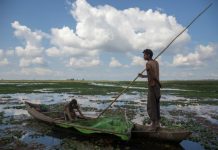
In what can be seen as a very disturbing trend in the world of biodiversity, scientists and researchers working on climate change and bird life have found that birds living near river banks have been ingesting late quantities of plastic.
The rates at which these birds seem to be ingesting plastic is nothing short of frightening and it shows us how dangerous this may be for their species and for the larger ecosystem. Scientists say that this is the first clear evidence that plastic pollutants that are found in rivers are finding their way into wildlife and thus are moving up in the food chain.
Scientists and researchers are alarmed by the fact that plastic 5mm or smaller(micro-plastic)including polyester, polypropylene and nylon are know to be leading to the pollution in our rivers and since birds may be dependent on catch from the river bodies, they too are ingesting plastic indirectly. Researchers from the Cardiff University have looked at plastic pollutants found in a bird known as the dipper which feeds on underwater insects and found that this species of birds has been ingesting significant amounts of plastic as part of their daily diets.
They are also feeding this material to their chicks. Previous research found that more than half of the insects that these rivers are full of contain elements of micro-plastic. The fact that we cannot overlook is that if so many river insects contain plastic or are contaminated, it is inevitable that craters such as the fish, birds and other predators will pick up these polluted prey. This is all the more frightening because this is the first time that this type of transfer through food webs has been shown so clearly in free-living river animals.
The research team that has been working on micro-plastic content in river animals and insects examined the droppings and regurgitated pellets of dipper birds living near rivers running from the Brecon Beacons down to the Severn Estuary.
What is alarming is that they found elements and fragments of micro plastic in more than half the samples taken from adults and nestlings. The greatest concentrations were found in urban locations and what was found was fibres from textiles or building materials.
They estimate that dippers ingest around 200 tiny fragments of plastic per day from the insects that they consume.
Earlier research has pointed out that micro plastic is found in the depths of the ocean and is finding its way to the bodily systems of animals living near the water bodies, from seals to crabs and sea birds.
It becomes extremely important to acknowledge that rivers are an important part of the ecosystem and they form some sort of a linking bridge between land and ocean.
They for the major route for micro plastics to travel from land to the ocean in the form of synthetic clothing fibres, tyre, dust and other substances obtained from plastic waste.
This significant research showing the extent to which micro plastics have been impacting the food chain of animals near the river was carried out by Greenpeace Research Laboratories at the University of Exeter and was published in the journal of Global Change Biology.













